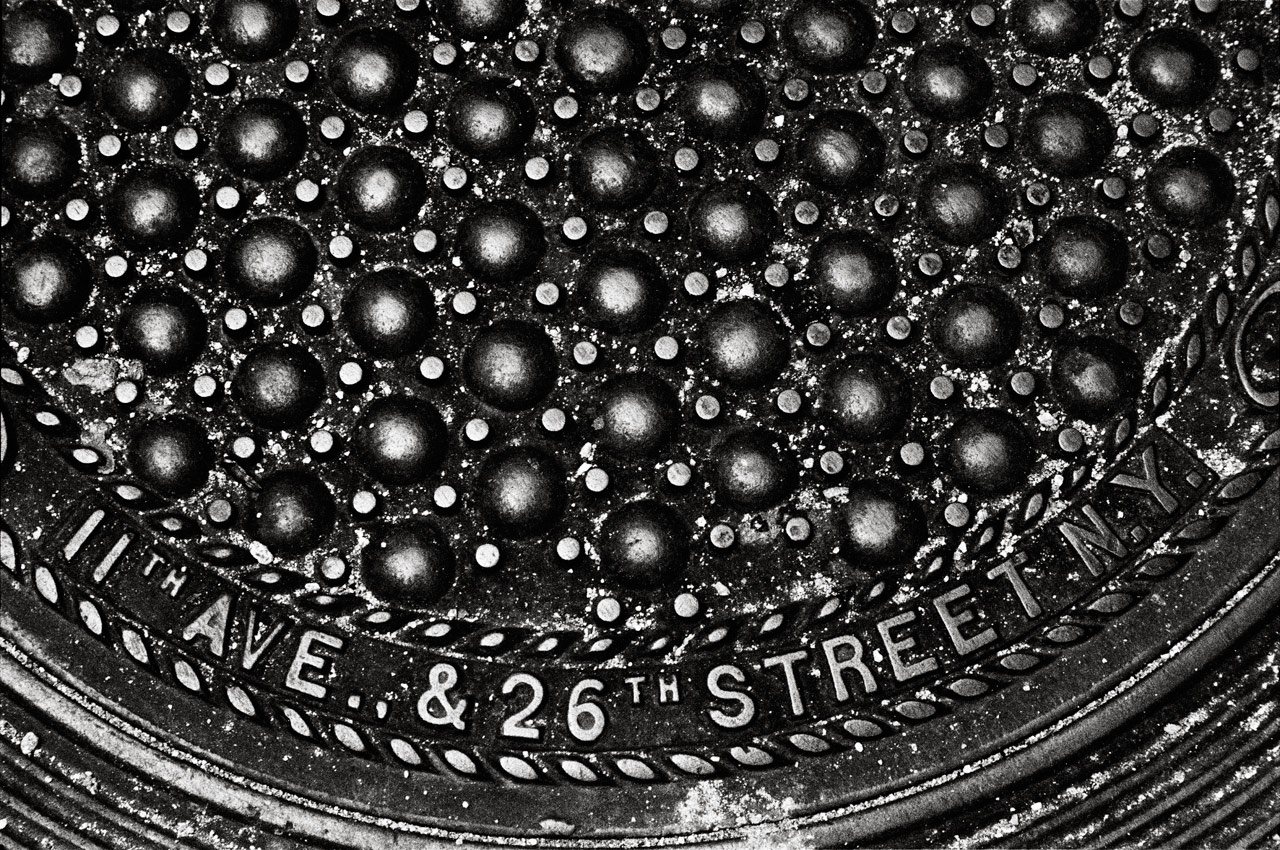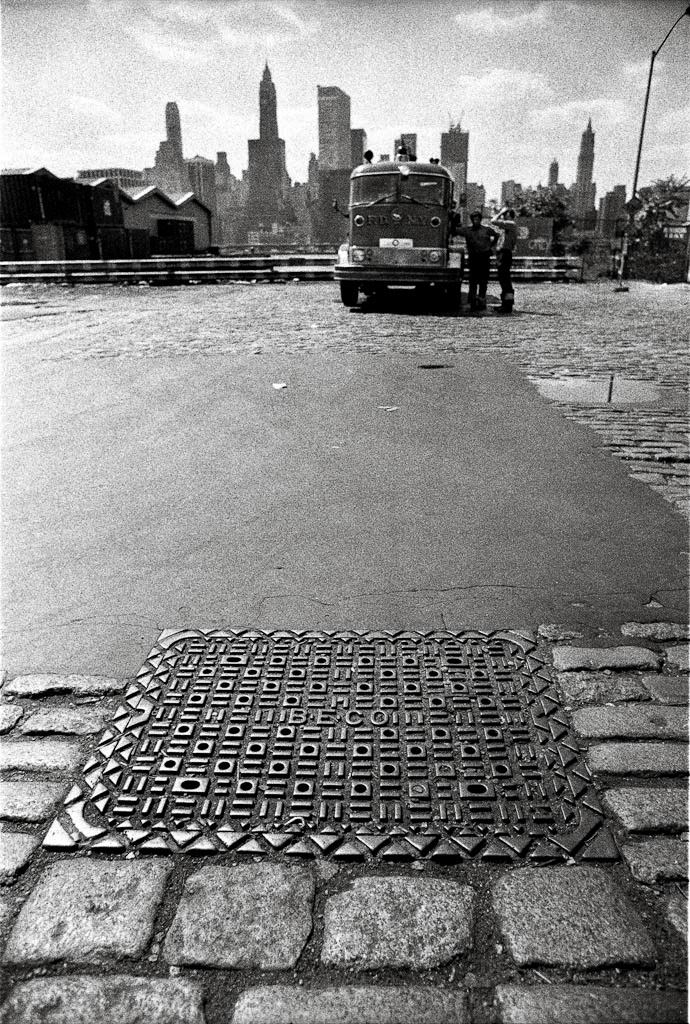Manhole Covers
ARTWORKS IN ASPHALT
It is the duty of artists and photographers to teach us to see. By the time I first came to New York I was already long familiar with the city’s appearance from the drawings of Saul Steinberg. I greeted the somewhat eerie clouds of steam billowing from the manhole covers on every corner like old friends. They felt to me like messengers from the seething, rumbling underworld separated from the steel and glass glamour of the skyscrapers by no more than a thin layer of asphalt.
Shortly before returning for a second visit I met the photographer Walter Schels who showed me his pictures of New York’s manhole covers. Still under the impression of his images, once I was there I began paying attention to the astonishing variety and the graphic and sculptural beauty of these cast-iron entities. My curiosity quickly blossomed into a passion, diverting my gaze from buildings and people, drawing it down to these witnesses of an era when people were still overawed by a seventeen-storey high-rise. Millions and millions of cartwheels, car tires and shoe soles have passed over them, yet without managing to wear away more than a few millimetres of their surface. One cannot possibly calculate how long it would take to finally erase all the ornaments and letters moulded into them.
Thus the manhole covers stand as the sole tokens of permanence in a city that exhausts and renews itself so rapidly as to spawn stylistic changes within a single decade that are as great as any of those observed in Old Europe in the course of a century. And they will still prevail when all the towers of the most recent skyscrapers have been replaced by even more massive ones.
One day a long time from now someone will excavate them and display them in a museum as relics of gigantic city that they will call the capital of the world in the twentieth century after Christ’s birth.
Manuel Gasser, in: “du – Kulturelle Monatsschrift”, April 1970













